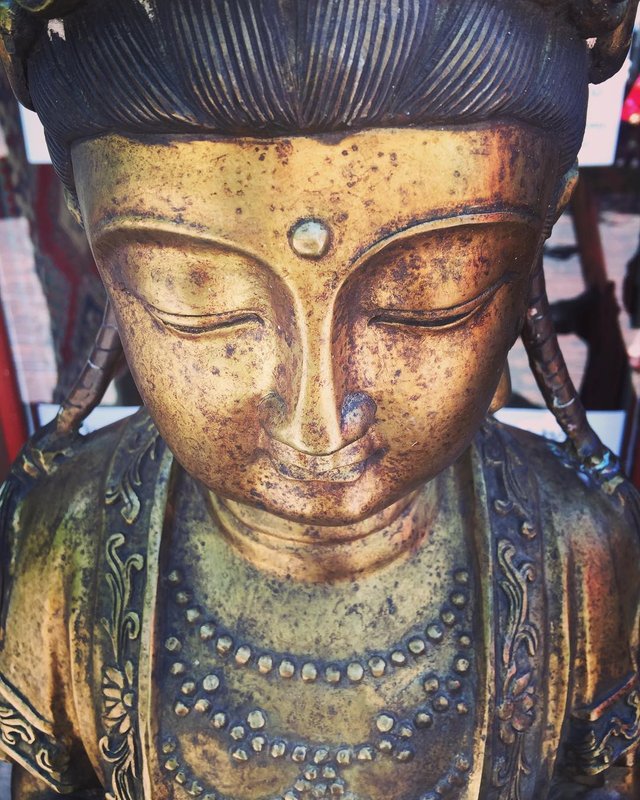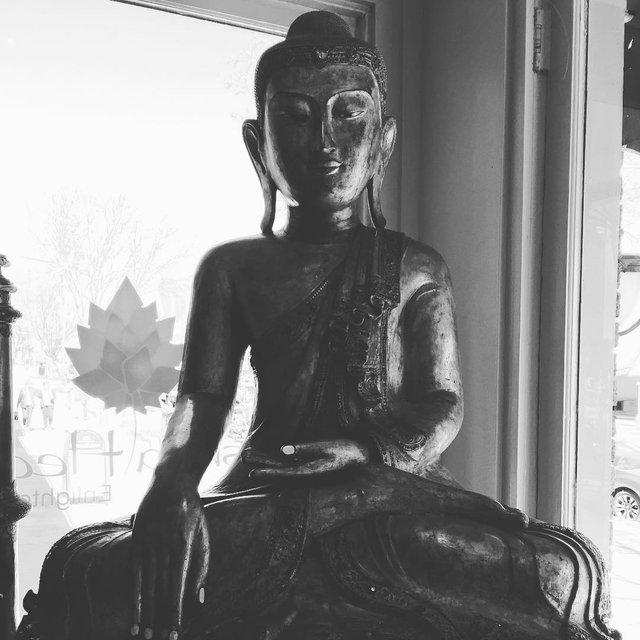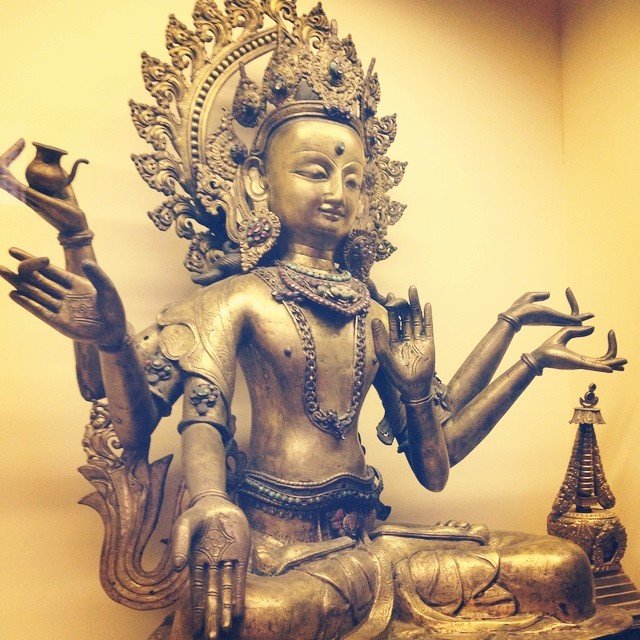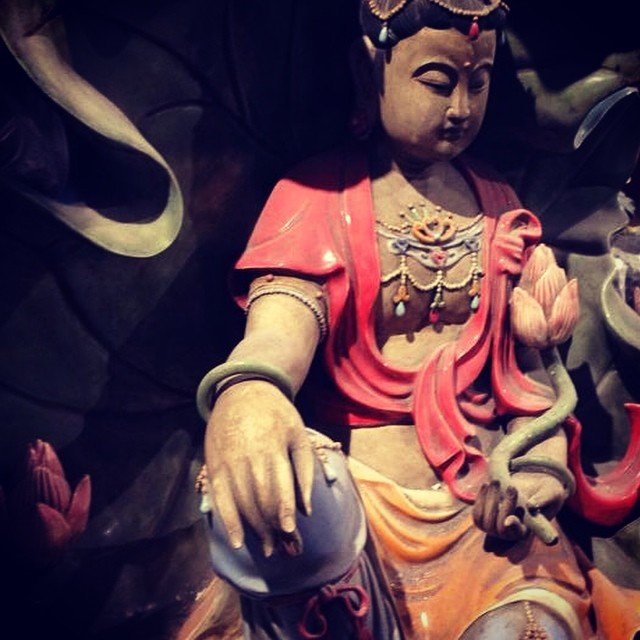Myanmar < 2007 Buddhist Monk Murders and Protest>

I had the honor and the privilege of working with the Prime Minister of Burma at the United Nations during a very turbulent time for Myanmar. I find it difficult to even say Myanmar without feeling the country should have kept the original name of Burma. Of course, this is not my decision and probably such a petty feeling considering the murders that had taken place at the time. So much political strife has happened in this country that it is heartbreaking. My heart truly goes out to the people of Myanmar. This writing is the research I did at the time of the 2007 Buddhist Monk Murders and Protest.
Ethical Intervention - Evaluating Options in Responding to the Recent Crisis in Burma
The question arises as to what foreign policy approach would work best in Burma? A simple political model does not work, but a blended foreign policy approach may best aid Burma in its current crisis. Multilateralism in the form of the International Committee of the Red Cross (ICRC), utilization of the United Nations (UN) because of its pragmatic benefits, liberal internationalist statecraft in the form of the original Wilsonian tradition, and a coalition of non-government organizations to aid Burma is a constructive blend of foreign policy tools that may alleviate the suffering of Burma today.
A Brief History of Burma
Myanmar the military name for the formerly democratic nation state of Burma gained independence from British colonial rule in 1948, and has been ruled by a military junta in one form or another since. The current regime has ruled since 1988, with the creation of the State Law and Order Restoration Council (SLORC), it being renamed the Sate Peace and Development Council (SPDC) in 1997.
During this time the military junta took over companies and civil service positions. With the SLORC’s dictatorial mismanagement of Burma the chronic inflation and near economic collapse led to mass protests that came close to overthrowing the government in 1988. In 1989, the SLORC violently suppressed pro-democracy protests with wide-scale arrests, the killing of activists, and a declaration of martial law. Although, the NLD Multiparty elections in 1990 gave the National League for Democracy (NLD) a decisive victory, but the military refused to relinquish power. The Burmese people’s democratic choice for leader, Daw Aung San Suu Kyi has remained in government custody intermittently since 1989, with the majority of her time being spent under house arrest. In Burma's last election, she won 82% of the seats in parliament, yet the military regime locked her up along with many members of her democratic political party.
Aung San Suu Kyi, a woman whom many call "Burma's Nelson Mandela," is the world’s only imprisoned Nobel Peace Prize recipient. The SPDC has kept a tight reign on Aung San Suu Kyi and her requests for a democratic leadership for Burma, including a new democratic constitution at an impasse.
The SLORC (renamed SPDC) has had full control over the National Convention to form a new constitution starting in 1993, and has currently finished its final session at the United Nations, without a final solution as of July 2007. Ethnic delegates to the Convention complained that not a single proposal for the new constitution has been accepted by the military regime. Ethnic delegates as well as ceasefire groups hoped for a federal state that would provide a degree of autonomy from a central government and protect their culture have all been rejected and may possibly put an end to their culture and identity. While a National Convention to draft a new constitution for Burma has been set in place, this specific UN foreign policy tool of formulating a constitution to help the people of Burma has failed in its production for democratic change.

2004 to 2005 Burma Demographics And Economic Crisis In Burma
Since the military junta took control over Burma in 1988, the regime has proved to be a failure to the states’ economic stability and the current political unrest. In retrospect, after the near governmental collapse during the SLORC failure to open up the economy to market forces and foreign investment, it can be stated that SLORC has never been willing to release its grip on crucial areas of the economy. For instance, imports and exports all require licensing, this in turn confronting the modern day businessman with large amounts of bureaucracy; thus, opening opportunities for corruption.
The trade in rice is entirely controlled by military-connected companies. Internal transport is controlled by poor infrastructure and frequent military bans on access to troubled areas. Many commodities are subsidized, but available in limited quantities. There is an official exchange rate for the local currency, the kyat, which is 200 times lower than the black market rate. In addition, more than half the annual budget goes to the armed forces, with that in mind Burma is subject to strict sanctions by the United States (US) and the European Union (EU), causing the poor in Burma to fall further into poverty without the opportunity of employment. A decision to raise civil service salaries by up to 1,200% last year did not help as civil servants could scarcely survive on salaries that sometimes fell below $3 a month. The result is what the UN described as a largely unreported humanitarian crisis. UN figures showed that one in three children is chronically malnourished, government spending on health and education is among the lowest anywhere in the world, and the average income is below $300 a year.
| Population | 50 million |
|---|---|
| Children in primary education | 85% |
| Life expectancy at birth | 61 yrs. |
| Infant mortality | 76 per 1,000 births |
| Health spend | 2.8% (World avg. - 10.2%) |
| Under 5 yrs. undernourished | 31.8% |
For a population that on average spends more than half of its income on food it is safe to state that the Burmese economic unrest bears the responsibility of the inherent distortions and rigidities of Burmese military economic mismanagement. Furthermore, the current crisis in Burma is in part due to the increased poverty and disregard for the human suffering in Burma today. The human suffering the people of Burma are undergoing include but are not restricted to the rape of young girls and pregnant women, the enforced disappearance of activists, monks and students, the largest population of child soldiers worldwide, vast food shortages, an increased spread of HIV/AIDS utilized as a military tactic, and the ethnic cleansing of the Karen people along the Burma – Thailand border.
Many of these humanitarian issues are in violation of UN Resolutions 96(I) and 260(III) for crimes against genocide and UN Resolution 1460 to halt the use of child soldiers, UN Resolution 60/262 to prevent the spread of HIV/AIDS, UN Resolution 61/177 for freedom from enforced disappearance, and UN Resolution 59/182 on freedom from torture; however, very little is being done internationally to help bring an end to the suffering of the people in Burma.

2007: A Year of Unrest in Burma
Jan. 2007-China & Russia veto a draft US resolution at the UN Security council urging Burma to stop persecution of minority/opposition groups. On Friday a US-sponsored UN Security Council resolution calling for the restoration of democracy in Burma and an end to human rights violations was vetoed by Russia and China; their first joint veto since 1972. They argued that the resolution was outside the remit of the Security Council, as Burma posed no threat to international security. The Burma Campaign UK points out that China and Russia are both significant arms suppliers to Burma's regime, and are seeking investment opportunities in Burma's large-scale gas reserves.
A report commissioned by Desmond Tutu and Vaclav Havel in September 2005 compared Burma with other countries where the Security Council has recently intervened in internal conflicts, including Sierra Leone and Afghanistan. The report identifies five criteria for intervention, including the overthrow of an elected government and human rights abuses. Burma was the only country that met all five criteria.
June 2007-ICRC accuses the government of abusing Burmese People’s Rights.
Aug. 2007-Wave of public dissent sparked by fuel price hikes. Activists arrested. Fuel prices hike 500%; laborers pay more than half their wages in travel costs.
Sept. 2007-Buddhist monks hold a series of anti-government protests.
Oct. 2007-Military presence in Rangoon. Monks absent, thousands reportedly rounded up, UN Security Council military crackdown.
Then came the rise in fuel prices on 15 August. There was no warning. Gas prices rose by 500%, and diesel - which more or less powers everything in Burma, from transport to the essential generators - doubled in price.
The impact was immediate. People could not afford to go to work, and the increased cost of transport started pushing food prices even higher.
Within days activists were out on the streets in protest. When they were arrested, the monks - who can accurately measure economic distress by the food put into their begging bowls every morning - took their place. Like so many decisions made by the reclusive generals, the sudden hike in fuel prices was hard to fathom.
The IMF had advised weaning the population off subsidized fuel, because with rising world oil prices it was becoming an unsustainable burden for Burma, which although rich in natural gas, relies on imports for almost all of its refined petrol and diesel. It is unlikely the IMF would have supported such a dramatic, and unannounced price rise.
Currently, the SPDC continues to fight an array of ethnic armed insurgencies that continue to drive significant refugee flows into Thailand and Bangladesh in the Karen district of Burma.
An estimated 27,000 Karen have fled an offensive by the Burmese army in northern Karen State, which began last February. Fifty five thousand Karen remain in hiding in the jungles bordering Thailand, refugees from the world's longest-running civil war, between the Burmese army and the Karen resistance, the Karen National Liberation Army. More than one million Karen have been displaced since 1996 in the face of systematic human rights violations including rape, forced labor and torture.
According to the Thailand Burma Border Consortium, in the past year alone 232 villages in eastern Burma have been destroyed, forcibly relocated or otherwise abandoned. The Karen Human Rights Group claims the most recent offensive by the Burmese army is part of a deliberate policy of ethnic cleansing that amounts to crimes against humanity. Yet the international community is doing little.
The current offensive in Karen State follows a clear pattern. Burmese troops force Karen civilians to relocate to villages already under their control. Old villages are burnt down and land-mined to stop villagers returning. Forced labor is demanded for months at a time. Anyone caught trying to leave is shot. Without access to their farms, many Karen suffer severe food shortages. A September 2006 report by the Back Pack Health Workers Team, which provides medical care to victims of the conflict, warns of a health catastrophe in eastern Burma as a direct result of the army's human rights abuses.
200 villages destroyed in the Karen district of Burma. 20,000 people displaced and dozens killed. Rape and the spread of HIV/AIDS prevalent in military tactics throughout Burma; including children and pregnant women. Burma has the highest rate of Child soldiers in the World -- kidnapped off the streets as young as 11 years old.

Foreign Policy Approach
Legitimacy of ICRC - neutral approach and 150 yrs. reliability of humanitarian efforts. On 6/29/07 ICRC make public announcement of Burma Border Cleansing on Burma/Thailand Border.
United Nations pragmatic negotiation approach on national reconciliation and human rights protection on Burma -- no movement but options are there if states support humanitarian intervention or international law implementation.
Liberal internationalist statecraft defined as democratization according to the Wilsonian tradition; spread of liberal democratic government, opening international markets, multilateralism, democratic regime change.
Burmese Buddhist Monk Protest “Ethical or Spiritual Leadership?”
Estimation of 10,000 Buddhist monks in Burma. Approx. 2% protested in Sept. and Oct. 2007.
Much has happened in the past 10 years and today, the environment is still heavy with Rohingya human rights abuses and an opposition to democracy. The unjust situation of the Myanmar people continues and my prayers are still with them.

Congratulations! This post has been chosen as one of the daily Whistle Stops for The STEEM Engine!
You can see your post's place along the track here: The Daily Whistle Stops, Issue #21 (1/19/18)
The STEEM Engine is an initiative dedicated to promoting meaningful engagement across Steemit. Find out more about us and join us today!
Thank you #steemengine! I ❤️ You! xx🦅
Thank you for the detailed reporting. Truly a devastating situation.
Thank you @bubbleboy for taking the time to read this intense piece. Not many are interested to know, so it shows a lot about your character. I appreciate your comment and thoughtfulness. Yes it is truly devastating.
This is a great information you put out here @eaglespirit
Thank you so much @tfame3865. It’s not easy putting out sensitive information, most people do not want to think about the sadness and truth in the world. Most want to focus on travel, the celebrity life, those that spend a lot of money, fancy food, etc. I appreciate your comment and support, in that it at the very least helps me to know someone cares. xx 🦅
The information about the treatment of the Burmese people is tragic. Thank you for creating informational and educational content.
@shawnamawna it certainly is tragic to see such a lovely people so horribly persecuted. It’s painful. Thank you for reading and stopping by. xx🦅